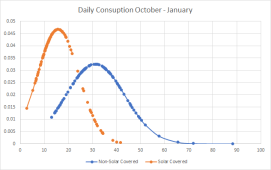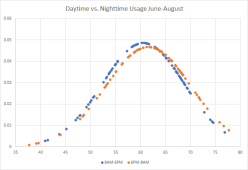lots of folks say that Texas has no net metering, thats not really correct
there is no mandated rule about it here
Certain areas and providers do offer it.
I have a plan where I am credited monthly for what I send to the grid as far as the electric usage cost. but not for the distribution cost, up to my bill amount. no rollover and no cash back
current cycle is over in 2 days
I used at night 400 kwh
I sent them 800 kwh
since I sent more than I used, I will pay only the delivery charge for the 400 I bought at about 5 cents each
so bill is $20 plus $5 fee = $25
the extra 400 kwh I sent them over the 400 kwh I used at night it wasted and I received nothing for it
there is no mandated rule about it here
Certain areas and providers do offer it.
I have a plan where I am credited monthly for what I send to the grid as far as the electric usage cost. but not for the distribution cost, up to my bill amount. no rollover and no cash back
current cycle is over in 2 days
I used at night 400 kwh
I sent them 800 kwh
since I sent more than I used, I will pay only the delivery charge for the 400 I bought at about 5 cents each
so bill is $20 plus $5 fee = $25
the extra 400 kwh I sent them over the 400 kwh I used at night it wasted and I received nothing for it




